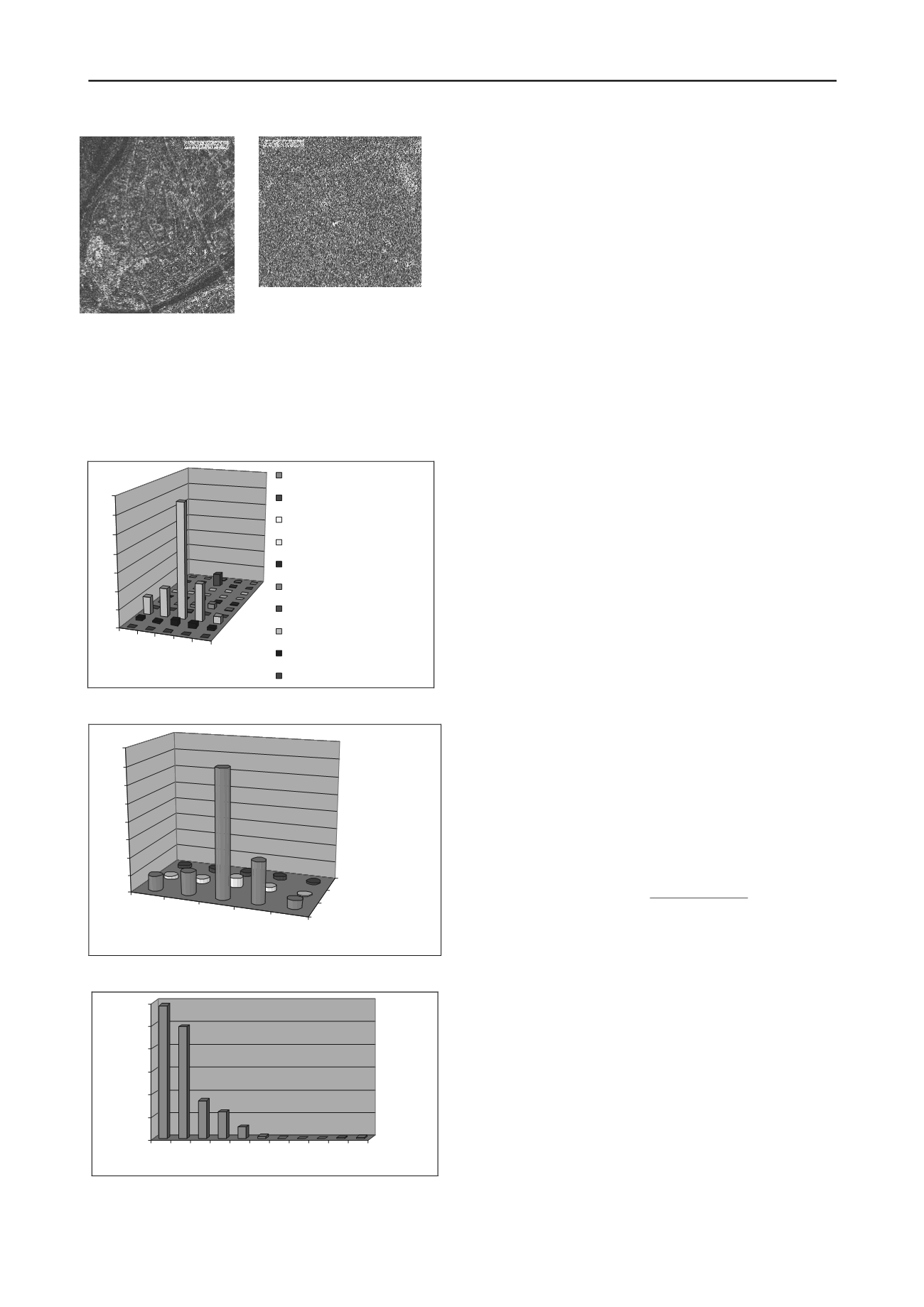
1522
Proceedings of the 18
th
International Conference on Soil Mechanics and Geotechnical Engineering, Paris 2013
Figure 5. Zones from the town part called Révfalu and the inner city.
The checklist consisted of questions about:
•
General data of each building (age and function of the
buildings, regularity in plan and elevation, position of the
building, changes in function, previous damages, state of the
building, etc.)
•
Structural data of each building (dimensions, construction
system, quality of materials, workmanship)
before 1910
1910-1945
1945-1990
1990-2006
after 2006
0
200
400
600
800
1000
1200
1400
prefabricated frame (rc)
prefabricated panel (rc)
flatslab-and-columns system(rc)
moment-resistant frame (steel, rc)
cocrete wall (rc)
column-and-beamsystemwith
infill walls (steel, rc, wooden)
column-and-beamsystemwith
curtain wall (steel, rc, wooden)
load-bearing wall (masonry, stone,
mixed, adobe)
reinforced walls (masonry, stone,
mixed)
other
Figure 9. Building heights of the analyzed town parts.
before
1910
1910-
1945
1945-
1990
1990-
2006
after
2006
residential building
public building
other building
0
200
400
600
800
1000
1200
1400
1600
Figure 10. Building functions and construction period.
1171
988
335
237
104
20 5 0 4 9 12
0
200
400
600
800
1000
1200
ground
floor
g+2
floor
g+4
floor
g+6
floor
g+8
floor
g+10
floor
Figure 11. Structure of the buildings and construction period.
Data from 2885 building were analysed, and buildings are
classified based on these results. For each building class, a
vulnerability function is assigned. The figures above give an
overview about the analysed building-stock.
4 CONCLUSION
First, it should be emphasized that a large percentage of
building stock was built without consideration of earthquake
loads and these buildings are very vulnerable to a moderately
strong seismic event. Focus of efforts should be directed toward
prevention: a relatively large building stock needs remediation,
highlighting the importance of this research.
The vulnerability functions are being derived for typical
layouts, this way offering many curves. With these, experts
could decide on-site to which group the building belongs just
based on visual screening.
Further research focuses on the determination of the
expected damage for different values of PGA.
This way the method would offer a fast evaluation and allow
the evaluation of many earthquake scenarios to a given town. It
is very important to provide useful information for
governments, authorities and insurance companies for setting up
a priority order, so that remediation and intervention can be
prioritized.
5 ACKNOWLEDGEMENTS
The authors acknowledge the financial support of the Széchenyi
István University within the framework of TáMOP 4.2.2/B-
10/1-2010-0010 application.
6 REFERENCES
Bisztricsányi E. 1974. Mérnökszeizmológia,
Akadémiai Kiadó
,
Budapest
Calvi G.M. 1999. A displacement-based approach for vulnerability
evaluation of classes of buildings,
Journal of Earthquake
Engineering
, Vol. 3, No. 3
Castano J.C. 1998. A seismic risk reduction program for Mendoza City,
Argentina,
Proceedings of the 10
th
ECEE
Csák B., Hunyadi F., Vértes Gy. 1981. Földrengések hatása az
építményekre,
Műszaki Könyvkiadó
, Budapest
D’Ayala
D. et al 1997.
Earthquake loss estimation for Europe’s
historic town centres,
Earthquake Spectra
, Vol. 13, No. 4
Dulácska E. and Kollár L. 2003. Méretezés földrengésre az európai
elvek figyelembevételével,
Magyar Mérnöki
Kamara,
Tartószerkezeti Tagozat
, TT
–
TS 4 2003.
Fäh D. et al 2001. Earthquake scenarios for the city of Basel,
Soil
Dynamics and Earthquake Engineering,
21, 405-413 p.
Földrengés Információs Rendszer
Grünthal G. editor 1998. European Macroseismic Scale 1998,
Luxembourg
Haddar F.N. 1998. Urban seismic vulnerability analysis: The case of
Algeria,
Proceedings of the 10
th
ECEE
Kollár L. 1990. Építmények méretezése földrengésre,
Magyar Mérnöki
Kamara, Tartószerkezeti Tagozat
, TS S-35. TTI
Lang K. and Bachmann H. 2000. Erdbebenverletzbarkeit bestehender
Gebäude aus unbewehrtem Mauerwerk, in Erdbebenvorsorge in der
Schweiz
–
Maßnahmen bei neuen und bestehenden Bauwerken,
SGEB/SIA Dokumentation D0162,
Schweizerischer Ingenieur- und
Architekten-Verein
, Zürich
Musson R. M. W. 2000. Intensity-based seismic risk assessment,
Soil
Dynamics and Earthquake Engineering
20, 353-360 p.
Sandi H. et al 2002. Hazard analysis for Potenza, Italy. A case study in
the frame of ENSeRVES project,
Proceedings of the 12
th
ECEE
Timochenko I. 2002. Seismic vulnerability assessment of buildings on
the basis of numerical analyses,
Proceedings of the 12
th
ECEE
Vaseva E. et al 2002. Seismic vulnerability assessment of buildings in a
given region according to EMS 98,
Proceedings of the 12
th
ECEE
Zsíros T. 2000. A Kárpát-medence szeizmicitása és földrengés
veszélyessége: Magyar földrengés katalógus (456
–
1995), Budapest


